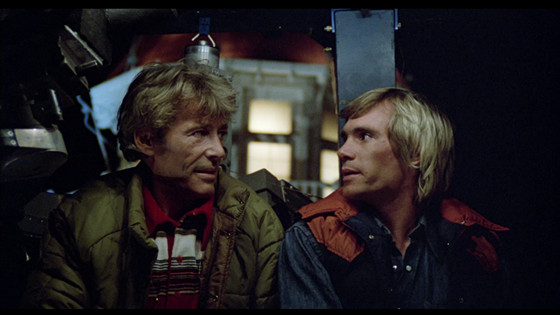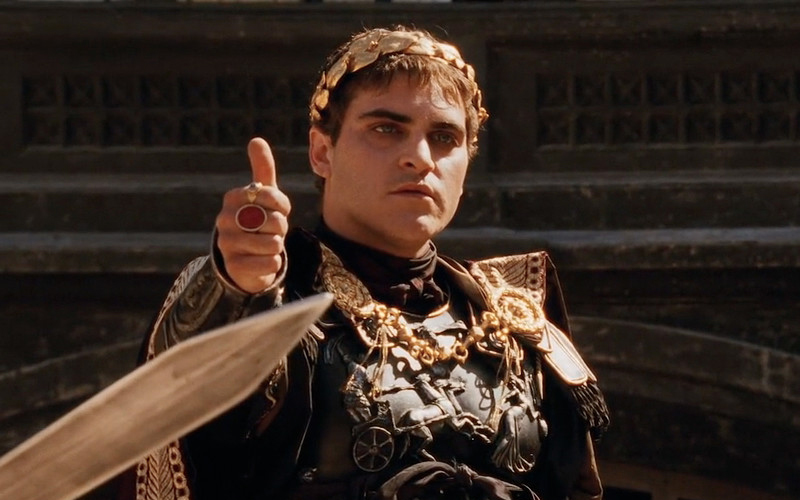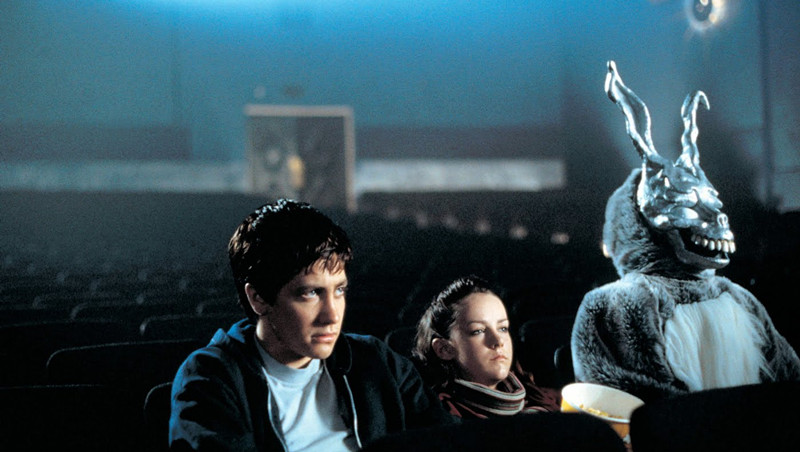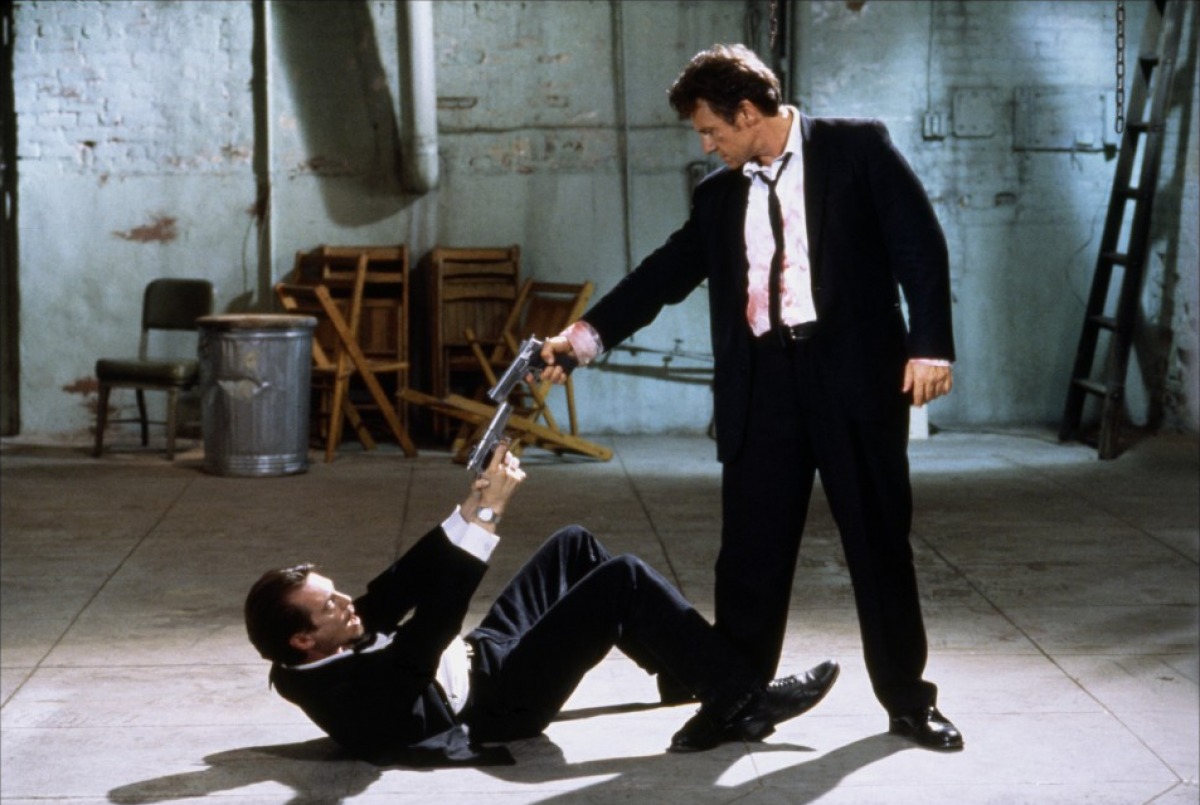6. The Stunt Man (1980, Richard Rush)
Ebert’s Rating: 2.5 Stars

“The Stunt Man” is a strange and frustrating film. But it is also an incredibly fun and ambitions film featuring one of Peter O’Toole’s most unusual performances being cast against type. The film follows the life of Cameron, an escaped convict on the run.
When he stumbles upon a film production the director Eli Cross (O’Toole) casts him as the stunt man. Cross is aware of Cameron’s circumstances and needs to replace a stunt man who dies under mysterious circumstances. As the film goes on, Cameron begins to suspect that Cross is trying to kill him. He assigns the most dangerous stunts to Cameron alone.
The film plays with the viewer’s expectations. It explores the relationship between cinema and reality. Cameron, as well as the viewer, is constantly questioning whether what is going on around him is real or a part of the film’s production. Ebert disliked this aspect of the film, stating, “film that depends on deceiving us has got to play by its own rules. If we are going to be deceived in general, fine, but then we can’t be cheated on particulars.”
One can expect this from him as he disliked many of David Lynch’s films that toyed with reality (i.e. “Lost Highway” and “Blue Velvet”). However, he failed to see the technical genius behind this trick. The film is so brilliantly constructed and shot that the viewer is immersed in Cameron’s experience. The viewer truly has a connection to the protagonist as they are put on the same intellectual playing field.
7. Gladiator (2000, Ridley Scott)
Ebert’s Rating: 2.5 Stars

Ridley Scott’s historical epic probably shouldn’t have won the Oscar for Best Picture. It was up against “Crouching Tiger, Hidden Dragon” and “Traffic”. Yet it is still a very good movie imbued with powerhouse performances from Russell Crowe and Joaquin Phoenix.
The film’s story is fairly straightforward. A man is robbed of his former power and family and seeks revenge (isn’t this the plot of “The Revenant”?). In other hands, the film would be your run-of-the-mill sword and sandals film. But Ridley Scott infuses so much tension and energy into each scene that it transcends its formulaic story (similar to what Alejandro Iñárritu has done with “The Revenant” this year).
Furthermore, the story does have an interesting political subtext that it owes to the year it was released. The fact that “Gladiator” came out in 2000 is very interesting, considering the hotly debated 2000 presidential election between George W. Bush and Al Gore. I realize it was made before this event, yet every time you make a film in a certain context, regardless of other factors, you are going to have people feel that it embraces a current issue.
In the film, Commodus steals the position away from his father and casts Maximus down into slavery. This mirrors the election as many people feel that Gore was robbed of the presidency by other sociopolitical forces.
Nevertheless, Ebert criticized the story and the characterization, saying, “the film employs depression as a substitute for personality, and believes that if the characters are bitter and morose enough, we won’t notice how dull they are.”
Here, as with “Pat Garrett and Billy the Kid”, Ebert has failed to account for what a strong performance can do to a character. Maximus is bolstered by Crowe’s performance and any flaws in characterization are trumped by his fury.
8. Donnie Darko (2001, Richard Kelly)
Ebert’s Rating: 2.5 Stars

One can watch “Donnie Darko” a hundred times and still not fully grasp what the story is all about. The film is an enigma. Yet it is still incredibly captivating and spellbinding thanks to the perplexing ideas that it presents, paired with Jake Gyllenhaal’s star-making performance.
Ebert claimed “we come up empty in our search for meaning in the film.” To some extent he is true. Yet, “Donnie Darko” is one of the most original sci-fi movies that one will ever see.
Making sense of it is difficult but in the process of doing so you begin to appreciate the film more because of how it makes you ponder and wonder. Think about it, would you appreciate the films of Christopher Nolan as much if they didn’t make you work a little?
9. Reservoir Dogs (1992, Quentin Tarantino)
Ebert’s Rating: 2.5 Stars

Did Quentin Tarantino invent the postmodern film? The answer is probably not. But he was a major force behind the merging of avant-garde styles with the popular tastes during the 1990s. With “Reservoir Dogs”, Tarantino created the ultimate pastiche film whose originality devolved from its choice of what conventions and genres it desired to subvert.
“Reservoir Dogs” is a film brimming with style, ultra-violence, and most importantly, intelligence that would become staples for the director. The film is also filled with great performances. Steve Buscemi is as slimy as ever, while Harvey Keitel is a charismatic and Michael Madsen is terrifying. Madsen commands the screen and gives new meaning to Shakespeare’s line from Julius Caesar “Lend me Your Ears.”
Ebert felt that the film was entertaining but felt that it lacked plot. “The problem is with the screenplay. Tarantino doesn’t do much with his characters except to let them talk too much, especially when they should be unconscious from shock and loss of blood.”
What Ebert didn’t realize is that the characters in Tarantino’s films are cultural constructs. They are the characters from the noirs that you saw in the 1940s and 50s. They are supposed to be off. Their complexity is found in how simple they are. They point to themselves as constructs and that is what makes Tarantino so intelligent. He has the ability to fashion ideas that we know about and transport them into a different time and give them new meaning.
10. Rope (1948, Alfred Hitchcock)
Ebert’s Rating: 2 Stars

This is, admittedly, a minor work from Hitchcock. However, it is incredibly entertaining and philosophical in nature. This was also one of Hitchcock’s most ambitious efforts. He attempted, in 1948 mind you, to shoot this film to appear as if it was all in one shot.
This is reminiscent of some of today’s films, such as “Russian Ark” (2002) and “Birdman” (2014). Cameras could only film 10 minutes at a time then, so instead of dissolves, he would simply zoom in on a suit coat of one of the characters blackening the screen and then continue. This was his form of continuity editing for such a venture.
Ebert disliked this aspect of it, calling Hitchcock’s attempt at this an unnecessary “gimmick.” Yet the continuous shot feel adds a sense of claustrophobia to the already confined location of the apartment. Throughout the film, the shots wind around the set and we get a sense that we are also going through the character’s minds, as the perpetrator’s act is unraveled.
The film is a psychological thriller that tells the story of two college students who murder a classmate for the fun of it, and then invite his parents and fiancé over for dinner with the body stashed in the room. This is one of Hitchcock’s more underrated efforts. He commands the viewer’s attention through his technological maneuvers. The acting is somewhat hammy due to the fact that they had such long takes. Nevertheless, it is an ambitious and resonating film from Hitchcock.
Author Bio: Casey is originally from Chicago. He is Junior at New York University majoring in Cinema Studies with a minor in Film Production. He hopes to go on to Graduate school and eventually work in some creative component of the film industry.